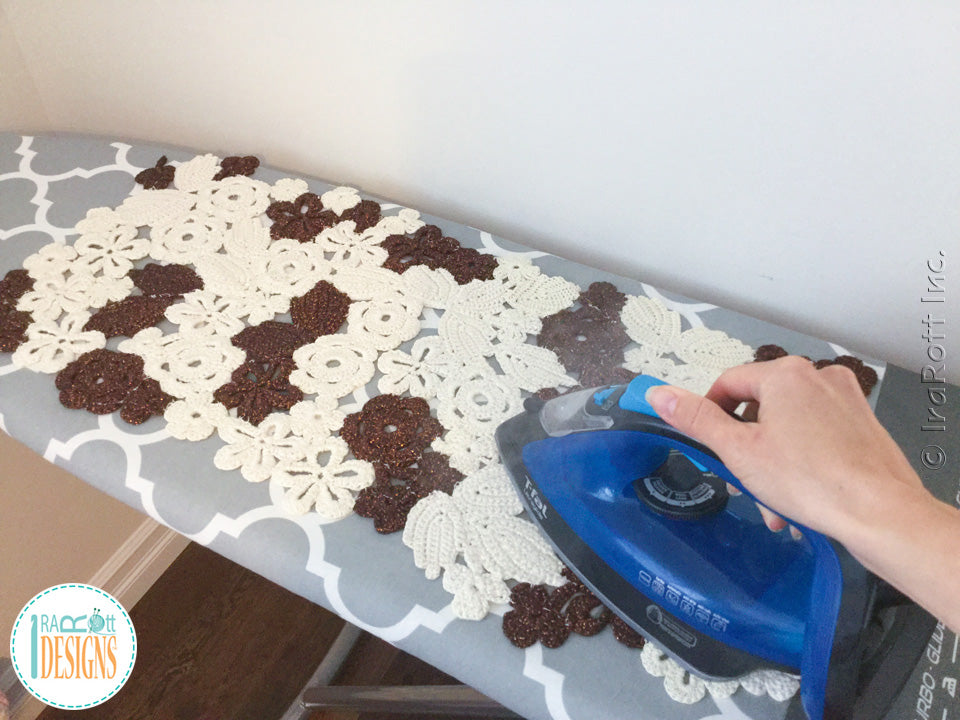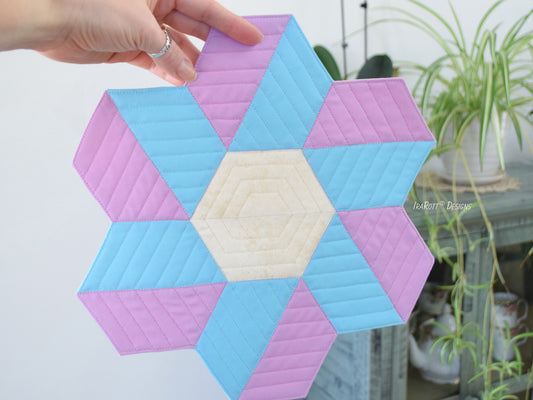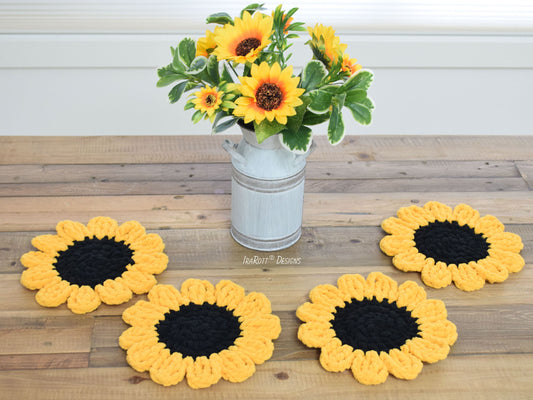Steam-blocking is an efficient method that enhances the appearance of your knit/crochet projects, just remember that not all fibers can handle hot steam. For instance, acrylic will melt or lose elasticity if you are not careful. When using steam, it is crucial to check the care instructions for the materials and choose the appropriate setting. I unusually steam-block crochet projects made from 100% cotton, and I find steam beneficial for 100% wool garments; however, I avoid steaming or pressing textured fabrics.
TIP: Before using hot steam, test it on a swatch sample to ensure that the fabric is not going to melt, stretch, shrink, or lose firmness. Measure your swatch before and after steaming.
Steam-Blocking With Steam Iron
Fill the reservoir of your iron with water, then plug it in to heat up and turn the heat dial to the most appropriate setting for your project. Lay the project onto the ironing board with the wrong side facing up and apply steam very gently, without stretching or pressing too hard. In some cases, you can only hover over your project, avoiding direct contact with iron. When I steam-block crochet lace made from 100% cotton, I simply press it with the iron in an up-and-down motion rather than a side-to-side motion. Let the fabric cool down before moving the project to avoid stretching or distorting fabric. When making garments, I prefer to steam-block all pieces individually, and then steam the seams after assembling.

Steam-Blocking With Garment Steamers
You can also use garment steamers for gentle blocking. This method works great for Afghans, knit garments, crochet shawls, and other items that can tolerate hot steam. When steaming, hover the garment steamer over your project without touching or pressing it and allow it to cool down after steaming. Remember to test it on a swatch though!
Steam-Blocking Through Wet Cloth
Steam-blocking through a pressing cloth or cheesecloth is a basic traditional method. The cloth will protect your knit/crochet fabric from distorsions and from glossiness. However, always check the care instructions on your yarn label and test it on a swatch first.
- Soak the pressing cloth (or cheesecloth) in water and squeeze excess moisture out
- Place the wet cloth over your project and press lightly with a hot iron in an up-and-down motion, pushing the steam through the pressing cloth into the fabric
- Continue this process until the pressing cloth is dry
- Allow your project to cool down after blocking

Below are some examples of my crochet projects that I finished using steam-blocking technique. To learn more about alternative blocking methods, refer to my Spray Blocking and Wet Blocking tutorials.













